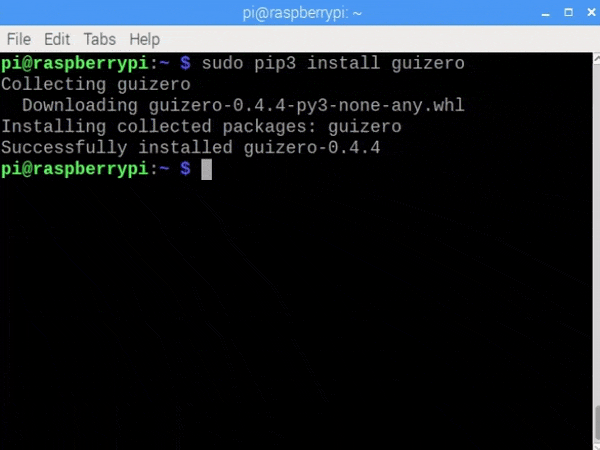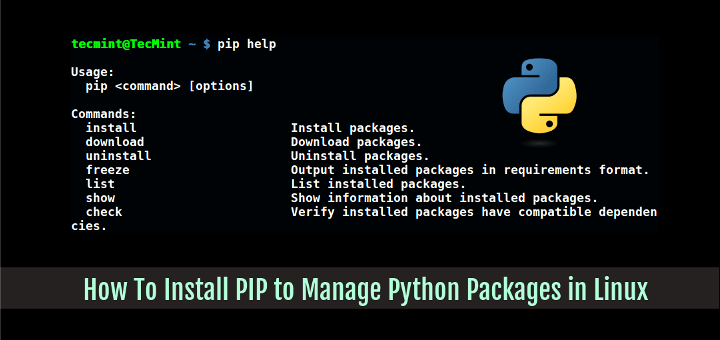How To Install Pip Step By Step

If you’re interested in working with Python programming, you will need to master the Python Package Index (PyPI). To install its base packages and expand the functionality of your Python stack, you will need to install pip – the PyPI package installer for Python – on your device. In this guide, we will explore how to install Python modules with pip and how to install pip itself.
Installing Python Modules with pip
Python modules are code libraries used by developers to add functionality to their Python applications. pip is a critical component of Python development, allowing developers to install new packages, upgrade existing packages, and uninstall packages as needed.

What is pip?
pip is a package-management system that simplifies the process of installing, upgrading, and removing Python packages. It is the successor to easy_install, providing improved installation speed, dependency management, and error reporting functionality. pip is included by default with the latest versions of Python, making it easy to use as part of your Python development stack.
What are the Benefits of Using pip?
pip is an essential tool for Python developers, enabling them to install and use a limitless range of third-party Python packages. Some of the key benefits of using pip include:
- Fast and easy installation of Python packages,
- Automatic dependency resolution during installation,
- Ability to install or upgrade multiple packages at once,
- Uninstallation of packages as needed,
- Support for version control with Git,
- Compatibility with all OS platforms that support Python.
Preparation
Before you begin installing Python modules with pip, you will need to ensure that your device has an updated version of Python installed. You can follow these steps to check for the latest stable version of Python:
- Go to the Python Downloads page.
- Download and install the version of Python that is compatible with your device.
- Once installed, ensure that Python is added to your device’s PATH variable. This will enable you to run Python commands from any location on your device. You can do this by following these steps:
- Right-click on My Computer/This PC and select Properties.
- Click on the "Advanced System Settings" link.
- In the System Properties window that appears, click on the “Environment Variables” button.
- Scroll down to the “System Variables” section and click on the “Path” variable to select it.
- Click on the “Edit” button.
- Add the path to your Python installation directory to the list of existing paths. It should look something like this: C:\Python38\Scripts\;C:\Python38\;.
- Click “OK” on all windows until you return to your desktop. Test that your PATH variable has been updated by opening a command prompt and typing “python”. If Python runs without errors, your PATH variable is properly set.
Installation
The process of installing pip depends on your operating system. In this section, we will explore the pip installation process for Windows, macOS, and Linux users.
Windows
Follow these steps to install pip on Windows:
- Go to the pip installation page and download the get-pip.py script.
- Save the get-pip.py file to your computer. You can save it anywhere, but we suggest saving it to your C:\Python38\Scripts directory for easy access.
- Open a command prompt window and navigate to your C:\Python38\Scripts folder.
- Type “python get-pip.py” and press enter.
macOS
Follow these steps to install pip on macOS:
- Open Terminal.
- Type “sudo easy_install pip” and press enter.
- Enter your device’s password when prompted.
Linux
Follow these steps to install pip on Linux:
- Open your terminal application.
- Type “sudo apt-get install python-pip” or “sudo apt install python-pip” for Ubuntu or Debian systems.
- Enter your device’s password when prompted.

Conclusion
Installing Python modules with pip is a critical process for any Python developer. By using pip, you can easily install, upgrade, and remove Python packages, making your development process more efficient and effective. By following the simple steps outlined in this guide, you can quickly install pip on your device and start using Python modules to take your application development to the next level. Happy coding!
If you are looking for How to Install Python Pip on Ubuntu 20.04 – linuxhowto.net you've came to the right place. We have 3 Pictures about How to Install Python Pip on Ubuntu 20.04 – linuxhowto.net like How To Install: How To Install Pip, How to Install Python Pip on Ubuntu 20.04 – linuxhowto.net and also How to Install Python Pip on Ubuntu 20.04 – linuxhowto.net. Here you go:
Installing Python Modules With Pip - Installing Python Modules
 projects.raspberrypi.org
projects.raspberrypi.org
install pip installing pip3 raspberrypi generic
How To Install: How To Install Pip
 howtoinstallgirigan.blogspot.com
howtoinstallgirigan.blogspot.com
install pip python linux packages use installation package document pvc sewer pipe installing uide seer introduction solid ie wall choose
How to install python pip on ubuntu 20.04 – linuxhowto.net. How to install: how to install pip. Install pip installing pip3 raspberrypi generic
Related post:
👉 How To Install Python Windows 11
👉 How To Install Pip Cv2
👉 How To Install Pip Jupyter Notebook
👉 How To Install Npm Bcrypt
👉 How To Install Npm Cli
👉 How To Install Python With Npm
👉 How To Install Npm In Windows 11
👉 How To Install Windows 10 From Usb From Bios
👉 How To Install Windows 10 By Command Prompt
👉 Install Pip On Rhel 8
👉 How To Install Xapk On Xiaomi
👉 What Is .xapk File And How To Install Xapk On Android
👉 How To Install Windows 10 Enterprise Ltsc
👉 How To Install Java Windows 10 64 Bit
👉 How To Install Python Windows 8
👉 How To Install Pip Library
👉 How To Install A Python Environment In Docker
👉 How To Install Xapk Reddit
👉 How To Install Python Version 3.8
👉 How To Install Html5lib Pip
👉 How To Create Virtual Environment And Install Specific Python Version
Komentar
Posting Komentar